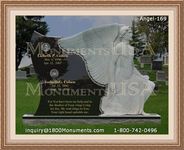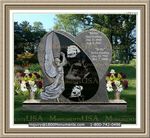|
Basics You Should Know When Picking Cemetery Plaques
A healing process is part of the grieving cycle when a loved one passes away. This type of loss is dealt with in a number of different ways. The first step for most people is the practice of installing cemetery plaques on the place where the deceased are laid to rest.
The main reason these markers are so useful in this process is that they make a situation that may seem unbelievable, more tangible. They not only give a bit of closure by marking the site where one's remains are laid to rest, but they also provide a lasting memorial to a loved one. Both of these purposes are necessary for a mourner to begin accepting the situation.
A monument of this type stands as an eternal testament of a person's time on Earth. The deceased's name, date of birth and day of passing are usually permanently imprinted on the plaque. Many individuals opt to add sentimental epitaphs and decorative factors such as design articles and engravings.
A fair variety of styles, shapes and sizes are available in this choice of marker. Many of them are flush for easy mounting, though it is not uncommon to see them with the features either added in dimensional relief or carved into the material. Personal preferences are generally what determines just how simple or complex the design will be.
Construction may be done in any of several acceptable materials. Because it is not only beautiful, but durable and easy to cast, bronze is among the more popular options in this format. Marble, brass, granite, slate and stainless steel are some of the other commonly used substances for making these items.
While the wishes of the deceased or their surviving family members are important, there might be other factors to be considered when choosing a design. Some burial facilities may place restrictions on what styles and materials may be used. The climate could also affect the choices that are viable in a particular region.
|
|



























